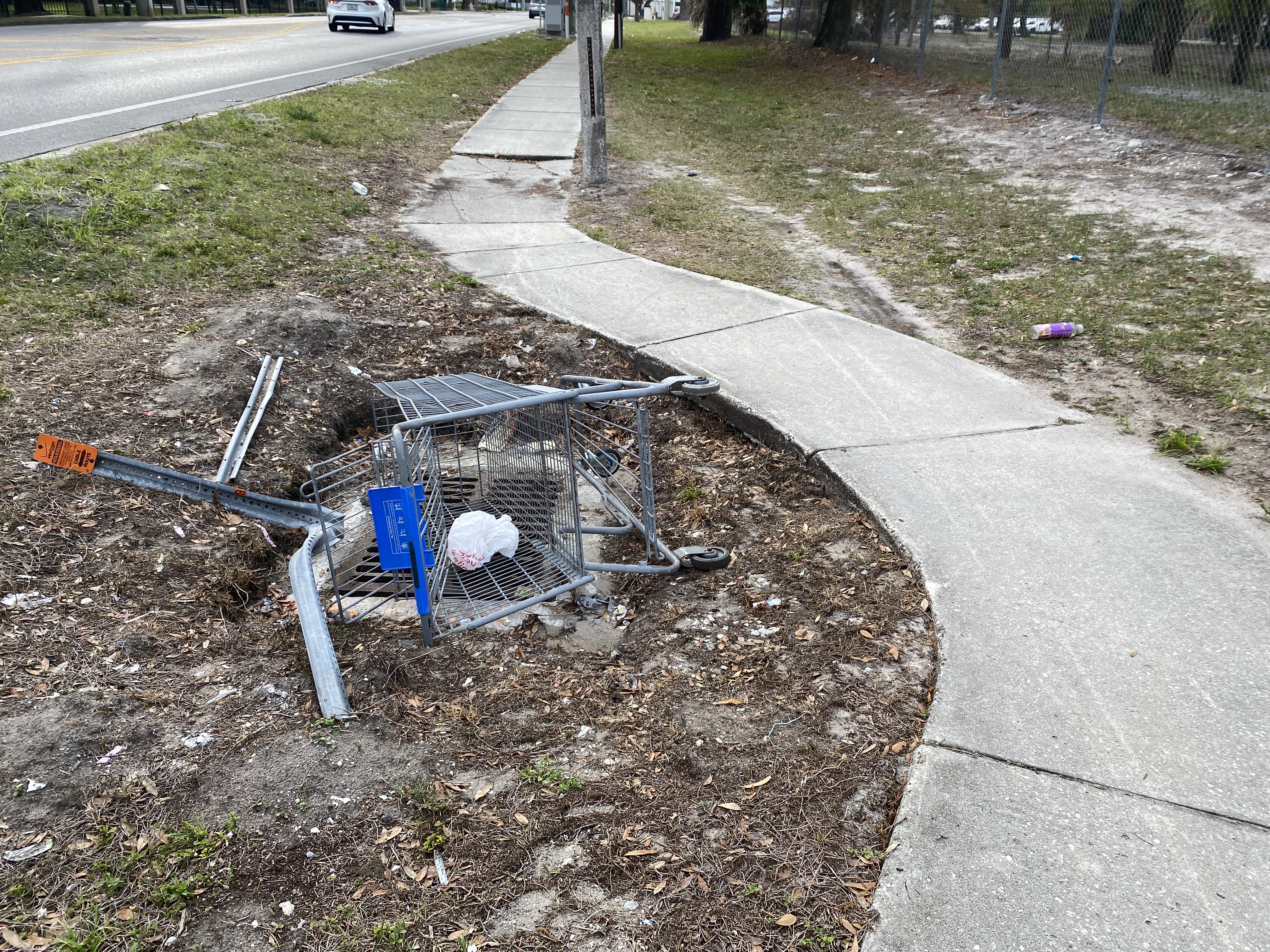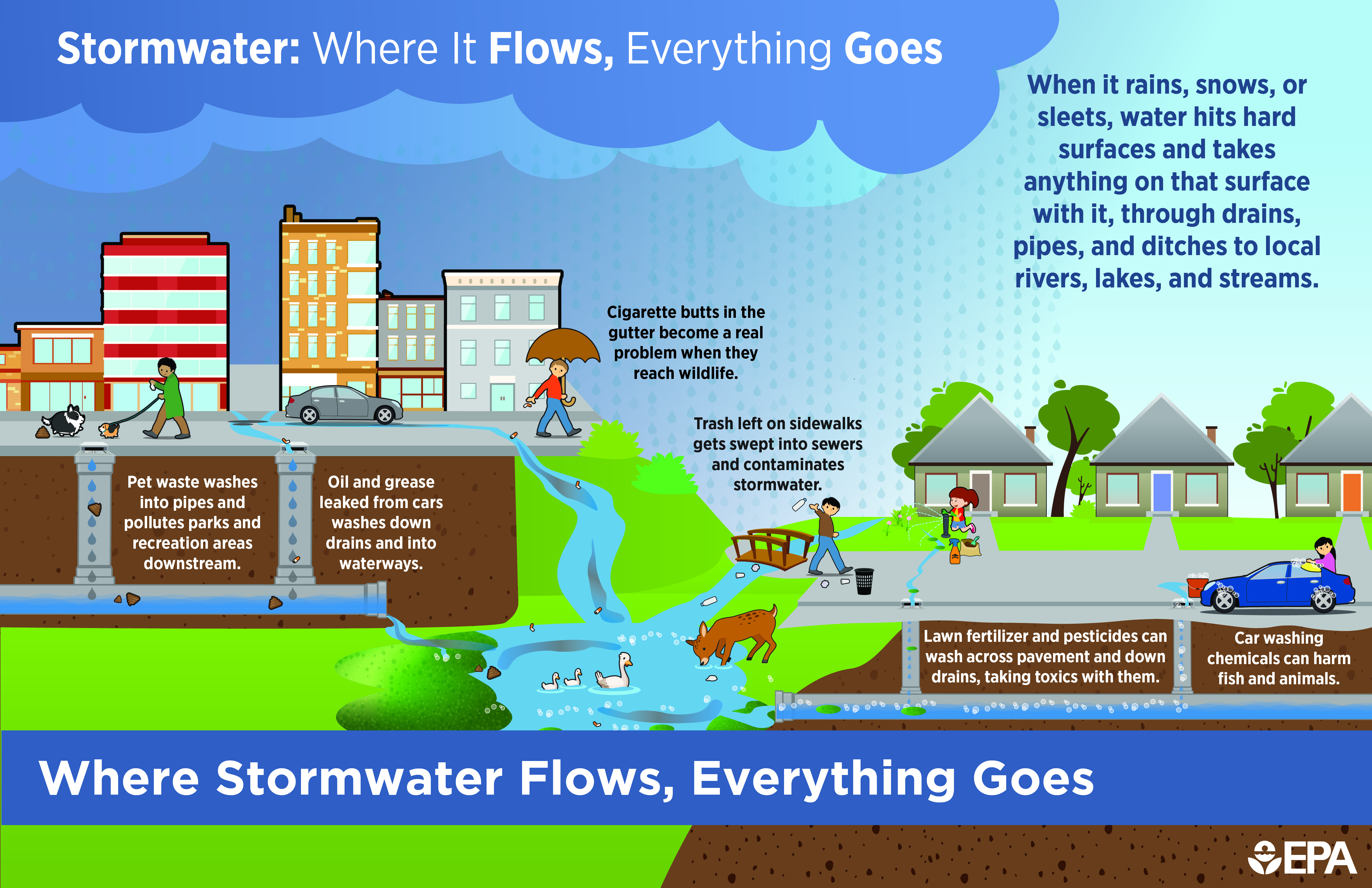Stormwater ponds: Community resources and information
What is Stormwater and why is it important?
Stormwater refers to the water that is produced from rainstorms and other weather events. When rainfall lands on the ground it becomes what is known as stormwater runoff on its journey to settle back into the earth. During a storm, this stormwater runoff washes across the ground and eventually finds its way into the ground or into your local stormwater system. Features such as streetdrains, roadside canals, and sewers, guide stormwater into the stormwater system to prevent flooding; but where does it go?
Permiablility
When a surface is permiable that means that water can easily be absorbed into the ground through its surface. Hard manmade surfaces like roads and sidewalks are nonpermiable. Nonpermiable surfaces trap water and require it to be directed into a stormwater system in order to avoid flooding.

|

|
| |
Stormwater ponds: Where water and more goes
A stormwater pond is a natural or manmade feature that collects excess stormwater. Stormwater ponds can be large bodies of water, or even just a low lying area that sits dry outside of the rainy season. Stormwater ponds are critical pieces of an area's landscape because they capture and store that excess stormwater by recieving it from the stormwater system; which prevents places such as your home and streets from flooding during rainstorms. They may also be homes, feeding grounds, and safe spaces for local wildlife They are especially important to places like the University Area because with so many nonpermiable surfaces, it's up to the stormwater system to handle much of the water. As you'll see however, it's more than just water that finds its way into these ponds.
